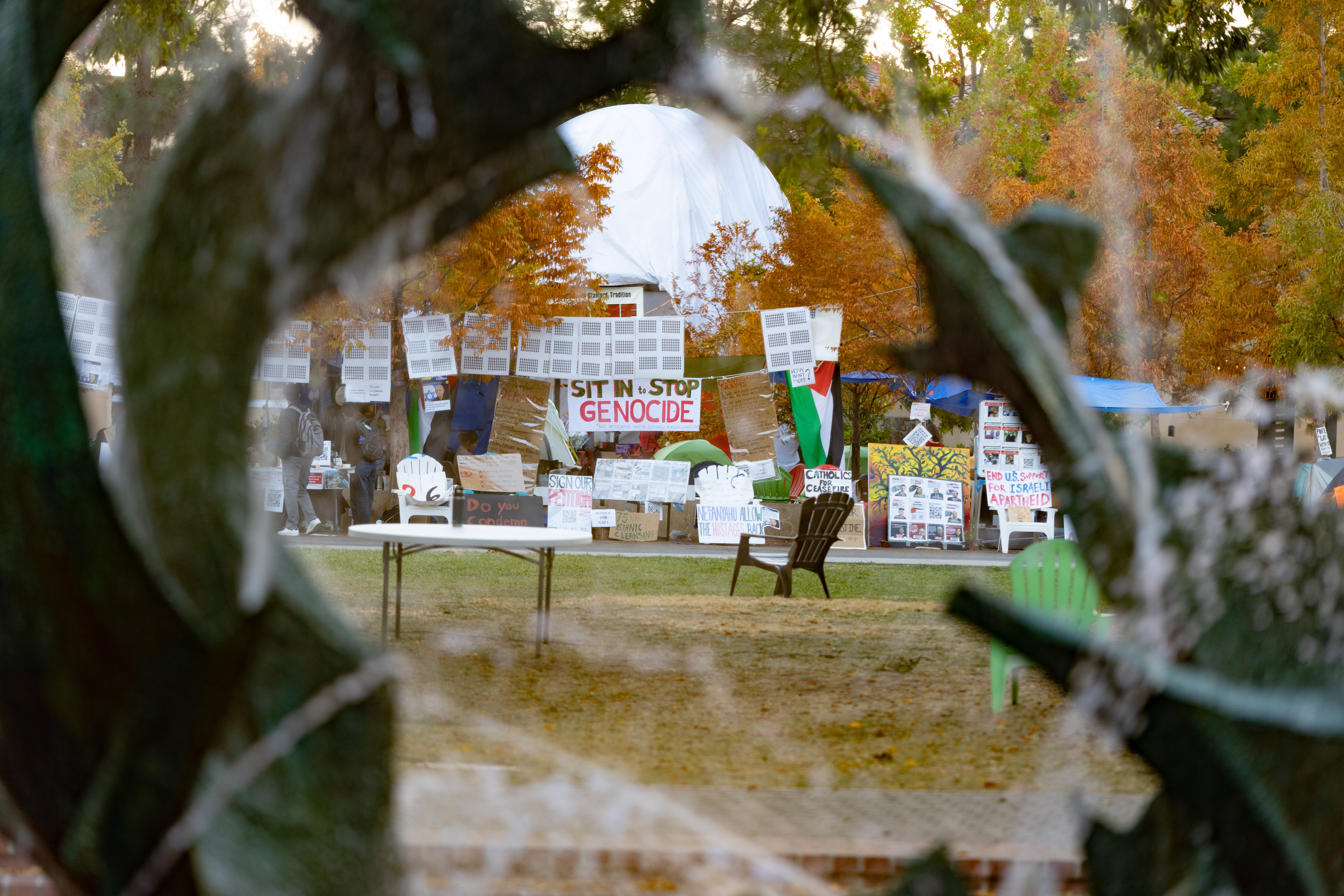For the past 94 days, the Sit-In to Stop Genocide has occupied the center of White Plaza. It has officially broken the record for the longest sit-in in University history — previously held by a month-long “Stanford Out of South Africa” demonstration in the mid-1980s.
While students were initially focused on meeting with President Richard Saller and Provost Jenny Martinez — a goal they accomplished on Dec. 6 — they are now focused on other demands, like calling on the University to endorse a ceasefire in Gaza and commit to the boycott, divest and sanction movement.
“We knew that we wanted to keep going because bombs have not stopped,” participant Pamela Martinez MFA ’25 told The Daily.
The sit-in participants continued their demonstration as weather worsened over break. Time away from classes provided the time for renovations, though, when a tent broke down from the rain, Martinez said.
She and others who stayed at the sit-in over break spent their downtime repairing and renovating the space, Martinez said.
Other sit-in participants concurred that the quieter campus allowed them to focus on improving the physical space, including developing new rain drainage systems and increasing supplies like blankets and lamps.
“We had a lot of time to fix the signs, fix the tents and all that. Winter break was much needed for the sit-in itself,” said one participant who requested anonymity due to fear of retaliation. According to this participant, the upgrades would not be possible if they were constantly caught up in conversations with passersby “and worrying about safety and security.”
“We recognize that we’re living with a lot of privilege,” Martinez said. “We have heated blankets and we have electricity, something that people in Gaza [do not have].”
Sit-in participants said various University administrators, including Saller, Dean for Religious & Spiritual Life Tiffany Steinwert and Director of Operations and Student Unions Jeanette Smith-Laws, stopped by over break to check on the students’ well-being.
As students return for winter quarter, participants at the sit-in, along with some other student groups, are continuing to call on University administration and the Board of Trustees to divest from and boycott Israeli ventures and academic institutions.
“Student groups who are interested in human rights and the rights of Palestinians … are joining us in a coalition to apply pressure to Stanford to divest from companies complicit in apartheid and companies who are actually providing weaponry and funding for the genocide,” said Kavya Varkey ’23 M.S. ’25, a participant and organizer with the sit-in.
Varkey said divestment is important and not unprecedented, “especially given Stanford’s history of participating in divestment during the Darfur genocide.” Varkey pointed to Stanford divesting from coal and from apartheid in South Africa as other examples of successful divestment campaigns.
“We feel that [Gaza] is yet another situation where we can call on Stanford to uphold moral values, uphold international law and prove that it does care about its students,” Varkey said.
During winter quarter, the sit-in intends to collaborate with other student organizations on community education and coalition building.
Varkey said the sit-in has previously organized a volunteer student organization town hall and a teach-in with the Black Student Union that “focused on Black and Palestinian liberation and solidarity.” They held traveling teach-ins about divestment and Palestinian solidarity at each ethnic theme dorm.
“We’ve been working on using education as a way to broaden our base and build a coalition between existing student groups and the sit-in to work toward a campaign and to raise awareness of the issues at hand,” Varkey said.
